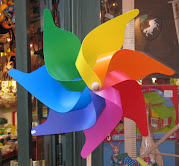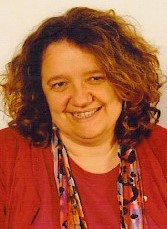It's been a glorious resurrection day. I've enjoyed the sunshine and watched wagtails and blackbirds in my garden as the forsythia and cherry blossom light up the springtime urban landscape.
In an idle way I've been musing on resurrection, on the rather militartistic language of triumph we use to talk about the mighty resurrection of Christ. I've been thinking about how we remain rather obsessed with the image of the cross and seem unable to cope with the image of the empty tomb, the upright, masculine image of the planted cross is clearer than the more hidden and feminine image of the empty tomb.
Over the doors of the Protestant Church here in Ferney you can just decipher "nous prêchons Christ crucifié" 1 Cor. 1.23 and whenever someone suggests regilding the lettering I try to resist, wishing it rather said something about resurrection or love and not more concentration on the crucifixion and Good Friday. Our German guest at dinner yesterday said that he even now had the feeling that Good Friday was really the holiest day of the year. My rather speedy reply to that was well of course you're a German Protestant! Yet the piety that focuses on Good Friday means that the joy and exuberance and beauty of the resurrection sometimes never really touches people as deeply as the pain of the cross. Many German Protestants may only take communion on Good Friday, which doesn't really give them a fully rounded experience of the eucharist.
Today I've been reading what is available to read online of Grace Jantzen's book Foundations of Violence - Death and the Displacement of Beauty. I feel both challenged and reassured by her insistance that we are natals not mortals, concerned about my own obsession with death rather than with life. I've been wondering if I am up to the feminist challenge of preaching in a way that believes in beauty rather than is obsessed with death. I've tried a bit in my sermon for tomorrow morning, but I suspect in the end I am not radical enough, too loyal to the institution. Grace was a Quaker.
Anyway here is how Jantzen's erudite and intuitive book begins - I've just ordered a copy and have discovered to my delight that volume two has now also been published, real resurrection good news.
"At the height of the bombardment of Sarajevo, so the story goes, a string quartet visited that city. One morning, as bombs were falling, the cellist look his instrument out into a square and began to play. Soldiers, hearing him, rushed to order him to take shelter, 'You are mad." they said; 'get inside. Look! Can't you see what's happening?'
'Yes" he said. 'Look. Can't you sec what's happening? And you say that I am mad?'
Who is mad and who is sane in a world in which beauty confronts death, and violence silences creativity? How can we learn to name what is happening, and find resources for transformation? Where are the springs of hope, that could bring newness and flourishing into a death-dealing world?
Not all sources of hope are intellectual of course; but my concern here is with what intellectuals offer. It is my belief that what the world sorely needs from intellectuals is an analysis of how the thought patterns of the west!have shaped and mis-shaped the world, and how they might be changed to enable human flourishing. There is a widespread 'demand for a transformative practice of philosophy that would be capable of addressing criticizing, and ultimately redeeming the present' (Critchley 1998: 10). How can newness enter the world? Where may we look to find the resources for redeeming the present?"
Monday, 13 April 2009
Musings on the resurrection
Publié par Jane à l'adresse 11:48
Libellés : Easter, Feminist theology
Subscribe to:
Post Comments (Atom)






0 Comments:
Post a Comment